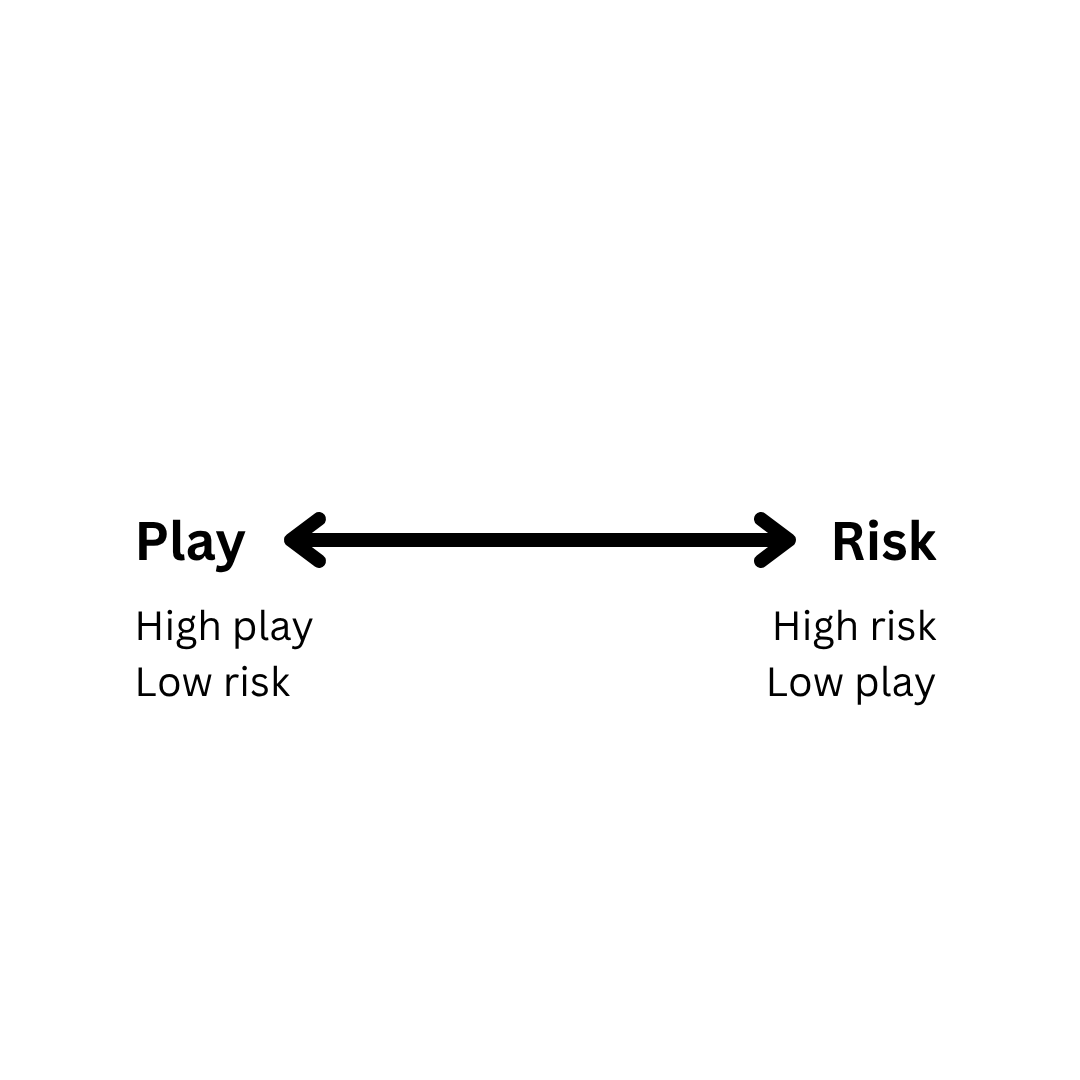Pondering Play
Some potential theories on play and risk
This summer my wife is hosting a Summer Art Club using Julia Cameron’s famous The Artist’s Way course. I’ve been participating as a way to stimulate my own creativity, and a week or so ago, a few of us in the group were on Zoom sharing our thoughts so far. Somehow the conversation drifted to the topic of play at one point, and we started talking about connections between play, risk, and identity.
As a long-time writer, poet, and writing teacher, I’ve thought about play in creativity a bit over the years. In particular, I’ve been influenced by comedian John Cleese’s famous 1991 lecture on creativity where he talks about open vs. closed mode thinking, and the importance of play and humor in the creative process.
But one thing I hadn’t quite put together until our conversation on Zoom the other day was the connection between play and risk. I tentatively put forward the hypothesis that play and risk exist on a spectrum that might look something like this:
In a way this maps quite nicely onto Cleese’s concepts of open vs. closed mode. We operate in open mode when we feel like we can play and explore without risk. We operate in closed mode when the circumstances suggest a stronger sense of seriousness and possibility of failure. About this, Cleese says in his lecture:
“Nothing will stop you being creative so effectively as the fear of making a mistake. Now if you think about play you’ll see why. To play is experiment. What happens if I do this? What would happen if we did that? What if? The very essence of playfulness is an openness to anything that may happen, the feeling that whatever happens, it’s okay. So you cannot be playful if you’re frightened that moving in some direction will be wrong, something you shouldn’t have done.”
A further point that came up in our Zoom discussion was how identity might be a factor in all of this. For example, my primary creative form is poetry. I identify as a poet, and I have a (very) small level of notoriety as a poet. I’m sure I have an identifiable style and distinct themes to my poetry that people recognize.
Because of these factors, in some ways it is harder for me to play when it comes to poetry, because it feels like there is more at stake. What if I try something different stylistically and people don’t like it? What if I write about a touchy subject that turns people off? How much I’m willing to risk and play in my poetry depends on how much I’m willing to risk my creative identity. It’s possible, and there are certainly established artists out there who still manage to push the boundaries of their art, I just think it’s harder the more your artistic identity solidifies.
So maybe we add a little “identity” slider to our Play-Risk spectrum:
After the Zoom conversation was over however, I kept rolling all of this around in my head, and realized there was another important factor here, and that is whether the play or risk involves community or just the individual:
If we add in a community <-> individual spectrum to our graphic, we now end up getting four quadrants, which clockwise I would label High Community/High Risk, High Individual/High Risk, High Individual/High Play, and High Community/High Play. I think this starts to give us a more wholistic picture of how all this looks in real life. We can actually start to plot some examples onto this graph to get a sense of how different activities might involve play and risk, in the communal and individual experience.
A few examples of what might exist in the High Community, High Risk quadrant include things such as intentional communities, or activism. You’ve got the involvement of multiple people, which can be encouraging for participation, but these activities also have the potential to fail spectacularly or go bad very quickly.
In contrast, something in the High Individual, High Risk quadrant might be an experimental art project. The potential reward is recognition for being an artistic innovator, but the risk is that everything rests on you the individual, and if the experiment is not received well it might tank your whole artistic reputation/career.
In the High Individual, High Play quadrant you have something as chill as a solo hobby. For example, this summer I’ve gotten back into visual art after abandoning sketching back in my teenage years. I’ve been doing little watercolors that bring me a lot of joy, and sometimes I’ve been sharing them on Instagram. It feels very low risk for me because I don’t stake my creative identity on being a visual artist, and I have no pretensions of being good.
Lastly, in High Community, High Play, we have things like Dungeons & Dragons (and other group role play games) and group improv. These communal ventures tend to be very low risk because everyone comes in with an expectation of play and experimentation. These are group safe spaces where experimentation is encouraged and even required.
These ideas are still very much in process, and I have no current grand conclusions based on my theories, but I’m fascinated by how they might help us think about the nature of our creative endeavors within society. I’d love to hear any thoughts, comments, or feedback you might have in response. Feel free to chime in below!








This is so good, Chris. Really helpful to see it laid out that way.